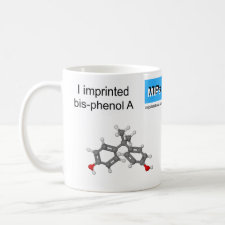
Authors: Chai R, Kan XW
Article Title: Au-polythionine nanocomposites: a novel mediator for bisphenol A dual-signal assay based on imprinted electrochemical sensor.
Publication date: 2019
Journal: Analytical and Bioanalytical Chemistry
Volume: 411
Issue: (17)
Page numbers: 3839-3847.
DOI: 10.1007/s00216-019-01858-3
Abstract: In this work, a novel electrochemical sensor was developed by the modification of poly(p-aminobenzene sulfonic acid) (pABSA), Au-polythionine (Au-pTH) nanowires, and molecularly imprinted polymer (MIP) on glassy carbon electrode surface for bisphenol A (BPA) detection. The results of characterizations including scanning electron microscope, transmission electron microscopy, Fourier transform infrared spectra, and X-ray diffraction showed the successful synthesis of helical structural Au-pTH nanowires, which acted as an electro-active probe for BPA detection. Cyclic voltammetry results illustrated that the modified pABSA, Au-pTH, and MIP endowed the sensor with good electrocatalytic activity, the second current signal, and recognition ability, respectively. Since the imprinted cavities provided electron transfer channels for thionine (TH) redox, the peak current of TH can be found in a blank electrolyte. The added BPA molecules can be rebound in imprinted cavities, which are oxidized and then display its current. The rebound BPA molecules in turn blocked the electron transfer channels for TH redox, resulting in the decrease of TH current. A double signal defined, as the sum of the changes of TH current (Δ iTH|) and BPA current (|Δ iBPA|) (|Δ iTH|+|Δ iBPA|), was employed as the detected signal for BPA sensitive detection, which was linearly proportional to the logarithm of concentration of BPA ranging from 8.0 × 10-8 to 1.0 × 10-4 mol/L with a limit of detection of 3.8 × 10-8 mol/L (S/N = 3) in a weakly acidic solution. Moreover, the natural recognition ability of MIP enabled the sensor to selectively detect BPA from its analogues. The proposed dual-signal strategy-based sensor provided a feasible tool for rapid, sensitive, and selective determination of BPA
Template and target information: bisphenol A, BPA
Author keywords: Electrochemical sensor, molecularly imprinted polymer, Au-pTH, Dual signal, bisphenol A



Join the Society for Molecular Imprinting

New items RSS feed
Sign-up for e-mail updates:
Choose between receiving an occasional newsletter or more frequent e-mail alerts.
Click here to go to the sign-up page.
Is your name elemental or peptidic? Enter your name and find out by clicking either of the buttons below!
Other products you may like:
 MIPdatabase
MIPdatabase









